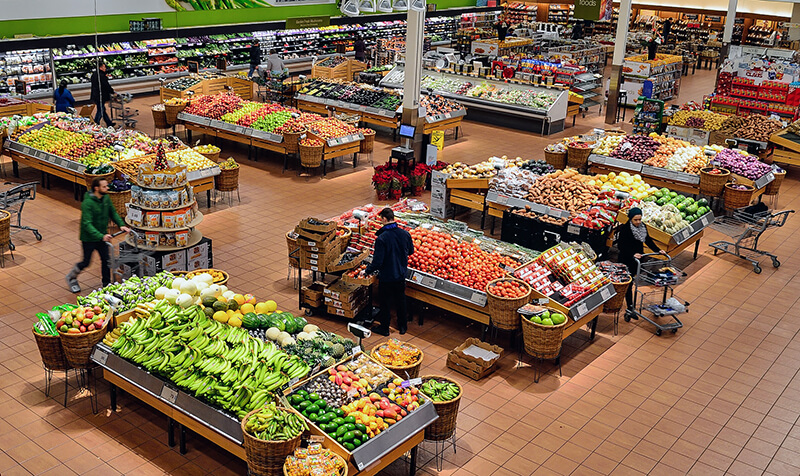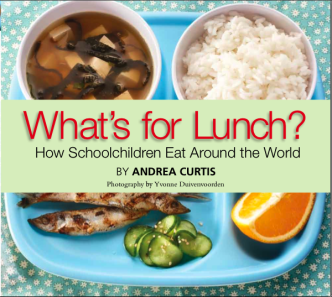Cultures, Food, and Communities Around the World (Grades 3-5)
Students explore different cultures around the world, compare worldwide communities with local communities, and explain the interrelationship between the environment and community development.

Background
Lesson Activities
Recommended Companion Resources
Credits
Author
Debra Spielmaker, Grace Struiksma, Sara Hunt, and Bekka Israelsen | Utah Agriculture in the Classroom
Sources
- http://allparenting.com/my-life/articles/969379/20-thanksgiving-fun-facts-to-teach-kids
- http://mentalfloss.com/article/71273/origins-15-holiday-foods-and-drinks
- http://www.delish.com/entertaining/g363/holiday-food-traditions/?slide=15
- https://www.nationalgeographic.com/travel/international-foods/celebration-cuisine-photos/
- http://www.foxnews.com/food-drink/2014/07/04/fourth-july-food-by-numbers.html
- https://www.brazil.org.za/agriculture.html
- https://ipad.fas.usda.gov/rssiws/al/nsa_cropprod.aspx
- http://www.new-ag.info/en/country/profile.php?a=846
- http://www.new-ag.info/en/country.php
Standards
Indiana Content Area Standards
-
Social Studies. Grade 3: Geography: Standard 3
Students explain that simple grid systems (latitude and longitude) are used to locate places on maps and globes, begin to understand the Earth/sun relationship, identify the distinctive physical and cultural features of their community, explain the geographic relationships between their own community and the state and other states within the region, and compare the geographic characteristics of their own community with communities in other parts of the world/country.
- 3.3.1 The World in Spatial Terms: Use labels and symbols to locate and identify physical and political features on maps and/or globes.
- 3.3.9 Physical Systems: Describe how climate and the physical characteristics of a region affect the vegetation and animal life living there.
-
Social Studies. Grade 4: Economics: Standard 4
Students study and compare the characteristics of Indianas changing economy in the past and present.
- 4.4.3 Economics: Explain how both parties can benefit from trade and give examples of how people in Indiana engaged in trade in different time periods.
- 4.4.4 Economics: Explain that prices change as a result of changes in supply and demand for specific products.
-
Social Studies. Grade 5: Economics: Standard 4
Students describe the productive resources and market relationships that influence the way people produce goods and services and earn a living in the United States in different historical periods. Students consider the importance of economic decision making and how people make economic choices that influence their future.
- 5.4.3 Economics: Define types of trade barriers.
-
English Language Arts.Grade 3.W.1
Write routinely over a variety of time frames and for a range of discipline-specific tasks, purposes, and audiences; apply reading standards to write in response to literature and nonfiction texts.
- The Research Process.3.W.5: Conduct short research on a topic. a. Identify a specific topic or question of interest (e.g., where did Benjamin Harrison grow up?). b. Locate information in reference texts, electronic resources, or through interviews. c. Recognize that some sources may be more reliable than others. d. Record relevant information in their own words. e. Presenttheinformation,choosingfromavarietyofformats.
-
English Language Arts.Grade 3.SL.1
Listen actively and adjust the use of spoken language (e.g., conventions, style, vocabulary) to communicate effectively with a variety of audiences and for different purposes.
- Discussion and Collaboration.3.SL.2.1: Engage effectively in a range of collaborative discussions (one-on-one, in groups, and teacher-led) on grade- appropriate topics and texts, building on others ideas and expressing personal ideas clearly.
- Discussion and Collaboration.3.SL.2.2: Explore ideas under discussion by drawing on readings and other information.
- Discussion and Collaboration.3.SL.2.4: Ask questions to check understanding of information presented, stay on topic, and link comments to the remarks of others.
- Presentation of Knowledge and Ideas.3.SL.4.1: Using appropriate language, report on a topic or text, or provide a narrative that organizes ideas chronologically or around major points of information, with appropriate facts and relevant, descriptive details, speaking at an understandable pace, in a clear, concise manner.
- Presentation of Knowledge and Ideas.3.SL.4.2: Create oral presentations that maintain a clear focus, using various media when appropriate to emphasize or enhance certain facts or details.
-
English Language Arts.Grade 4.W.1
Write routinely over a variety of time frames and for a range of discipline-specific tasks, purposes, and audiences; apply reading standards to support reflection and response to literature and nonfiction texts.
- The Research Process.4.W.5: Conduct short research on a topic. a. Identify a specific question to address (e.g., What is the history of the Indy 500?). b. Use organizational features of print and digital sources to efficiently to locate further information. c. Determine the reliability of the sources. d. Summarize and organize information in their own words, giving credit to the source. e. Presenttheresearchinformation,choosingfromavarietyofformats.
-
English Language Arts.Grade 4.SL.1
Listen actively and adjust the use of spoken language (e.g., conventions, style, vocabulary) to communicate effectively with a variety of audiences and for different purposes.
- Discussion and Collaboration.4.SL.2.1: Engage effectively in a range of collaborative discussions (one-on-one, in groups, and teacher-led) on grade- appropriate topics and texts, building on others ideas and expressing personal ideas clearly.
- Discussion and Collaboration.4.SL.2.2: Explore ideas under discussion by drawing on readings and other information.
- Discussion and Collaboration.4.SL.2.4: Pose and respond to specific questions to clarify or follow up on information, and make comments that contribute to the discussion and link to the remarks of others.
- Presentation of Knowledge and Ideas.4.SL.4.1: Using appropriate language, report on a topic or text or provide a narrative in an organized manner, with effective introductions and conclusions, using appropriate structure, appropriate facts and relevant, descriptive details to support main ideas or themes; speak clearly and concisely at an understandable pace.
- Presentation of Knowledge and Ideas.4.SL.4.2: Create oral presentations that maintain a clear focus, using multimedia to enhance the development of main ideas and themes that engage the audience.
-
English Language Arts. Grade 5.W.1
Write routinely over a variety of time frames and for a range of discipline-specific tasks, purposes, and audiences; apply reading standards to support reflection and response to literature and nonfiction texts.
- The Research Process.5.W.5: Conduct short research assignments and tasks on a topic. a. With support, formulate a research question (e.g., What were John Woodens greatest contributions to college basketball?). b. Identify and acquire information through reliable primary and secondary sources. c. Summarize and paraphrase important ideas and supporting details, and include direct quotations where appropriate, citing the source of information. d. Avoid plagiarism and follow copyright guidelines for use of images, pictures, etc. e. Presenttheresearchinformation,choosingfromavarietyofsources.
-
English Language Arts.Grade 5.SL.1
Listen actively and adjust the use of spoken language (e.g., conventions, style, vocabulary) to communicate effectively with a variety of audiences and for different purposes.
- Discussion and Collaboration.5.SL.2.1: Engage effectively in a range of collaborative discussions (one-on-one, in groups, and teacher-led) on grade- appropriate topics and texts, building on others ideas and expressing personal ideas clearly.
- Discussion and Collaboration.5.SL.2.2: Reflect on and contribute to ideas under discussion by drawing on readings and other resources.
- Discussion and Collaboration.5.SL.2.4: Pose and respond to specific questions by making comments that contribute to the discussion and elaborate on the remarks of others.
- Presentation of Knowledge and Ideas.5.SL.4.1: Using appropriate language, present information on a topic or text, narrative, or opinion in an organized manner, with effective introductions and conclusions, using appropriate structure, appropriate facts and relevant, descriptive details to support main ideas or themes; speak clearly and concisely at an understandable pace.
 by Andrea Curtis with your students. Show students the photographs of lunches from different parts of the world. Discuss the contents of each lunch and the country where it is commonly eaten.
by Andrea Curtis with your students. Show students the photographs of lunches from different parts of the world. Discuss the contents of each lunch and the country where it is commonly eaten.